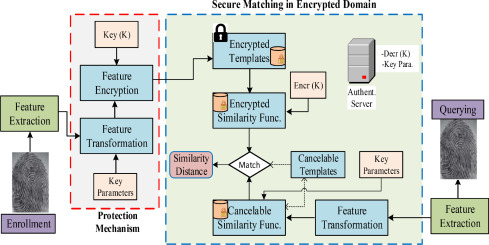

**Shifting to Biometrics: The Development of Secure Login on Digital Platforms**
In today’s digital landscape, where online platforms play a crucial role in everyday life, safeguarding personal and sensitive information has become a key priority. Conventional authentication methods, like passwords and PINs, have been the norm for accessing online services for a long time. However, these approaches are increasingly susceptible to security breaches, leading to a transition toward more secure and user-friendly options. Biometrics, which utilize distinctive physiological and behavioral traits, are rising as a premier solution in the progression of secure login frameworks.
**The Drawbacks of Conventional Authentication**
For decades, passwords have been fundamental to online security. Despite their widespread use, they are riddled with vulnerabilities. Users frequently create weak passwords, reuse them on various sites, or become targets of phishing schemes. Moreover, the overwhelming number of accounts demanding passwords can result in password fatigue, promoting insecure practices. These weaknesses necessitate the pursuit of stronger security solutions.
**The Emergence of Biometric Authentication**
Biometric authentication presents an appealing alternative through the use of unique biological features such as fingerprints, facial recognition, voiceprints, and even iris scans. These attributes are challenging to duplicate, offering a higher degree of security than traditional methods. The incorporation of biometrics into consumer devices, such as smartphones and laptops, has enabled broad acceptance and familiarity among users.
**Benefits of Biometrics**
1. **Improved Security**: Biometrics inherently provide greater security since they depend on unique biological traits that are hard to mimic or misappropriate. This minimizes the likelihood of unauthorized entry.
2. **Ease of Use**: Users are freed from the requirement to memorize complicated passwords. Biometric authentication is swift and effortless, often needing just a glance or a tap.
3. **Lower Fraud Rates**: By confirming that the individual trying to access an account is indeed the authorized user, biometrics can greatly decrease occurrences of identity theft and fraud.
4. **User Satisfaction**: The implementation of biometrics enhances the user experience by streamlining the login procedure, which can result in higher user gratification and loyalty.
**Obstacles and Considerations**
Even with its benefits, biometric authentication faces obstacles. Privacy issues are critical, as biometric data is sensitive and, if breached, cannot be altered as a password can be. It is vital to ensure that biometric data is kept secure and utilized ethically. Additionally, the technology must be inclusive, accurately recognizing various user demographics to prevent bias.
**Future Possibilities**
The outlook for biometric authentication is bright, with developments in artificial intelligence and machine learning improving accuracy and dependability. Multi-factor authentication systems that integrate biometrics with other security protocols are becoming more common, providing an extra layer of security. As technology continues to progress, biometrics are expected to evolve further, solidifying their place in the secure online authentication arena.
**Final Thoughts**
The shift to biometrics signifies a noteworthy advancement in secure login systems for digital platforms. By remedying the flaws of traditional authentication approaches, biometrics provide a safer, more convenient, and user-centered solution. As the technology progresses, it has the potential to transform the benchmarks of digital security, ensuring that users can explore the online realm with enhanced assurance and tranquility.






